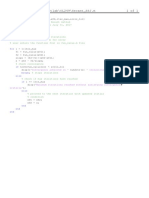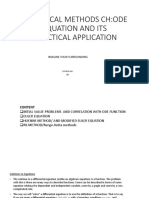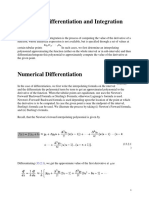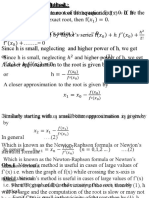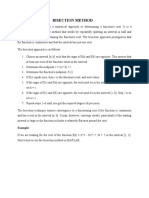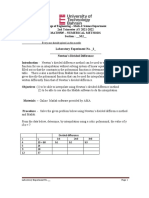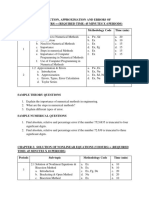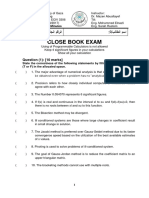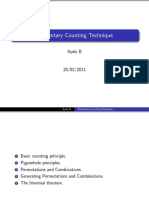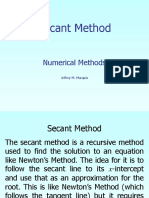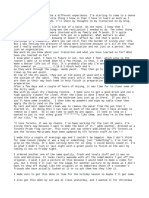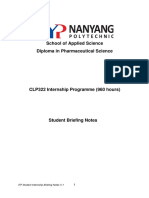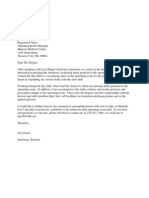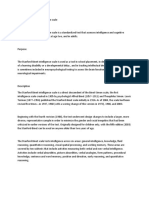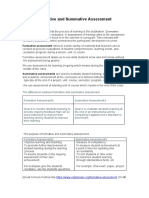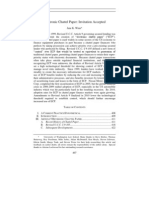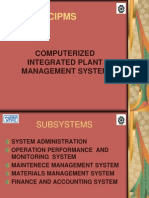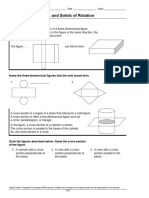0% found this document useful (0 votes)
189 views24 pagesSecant Method: Civil Engineering Majors Authors: Autar Kaw, Jai Paul
The document describes the secant method for finding the roots of equations. It provides a derivation of the secant method from Newton's method and geometrically. The algorithm involves taking two initial guesses and calculating successive estimates of the root using the secant method formula. An example applies the secant method to find the maximum deflection of a bookshelf by finding the root of a given deflection equation. Three iterations of the secant method are shown to estimate the root.
Uploaded by
Joven MadeloCopyright
© © All Rights Reserved
We take content rights seriously. If you suspect this is your content, claim it here.
Available Formats
Download as PDF, TXT or read online on Scribd
0% found this document useful (0 votes)
189 views24 pagesSecant Method: Civil Engineering Majors Authors: Autar Kaw, Jai Paul
The document describes the secant method for finding the roots of equations. It provides a derivation of the secant method from Newton's method and geometrically. The algorithm involves taking two initial guesses and calculating successive estimates of the root using the secant method formula. An example applies the secant method to find the maximum deflection of a bookshelf by finding the root of a given deflection equation. Three iterations of the secant method are shown to estimate the root.
Uploaded by
Joven MadeloCopyright
© © All Rights Reserved
We take content rights seriously. If you suspect this is your content, claim it here.
Available Formats
Download as PDF, TXT or read online on Scribd
/ 24













